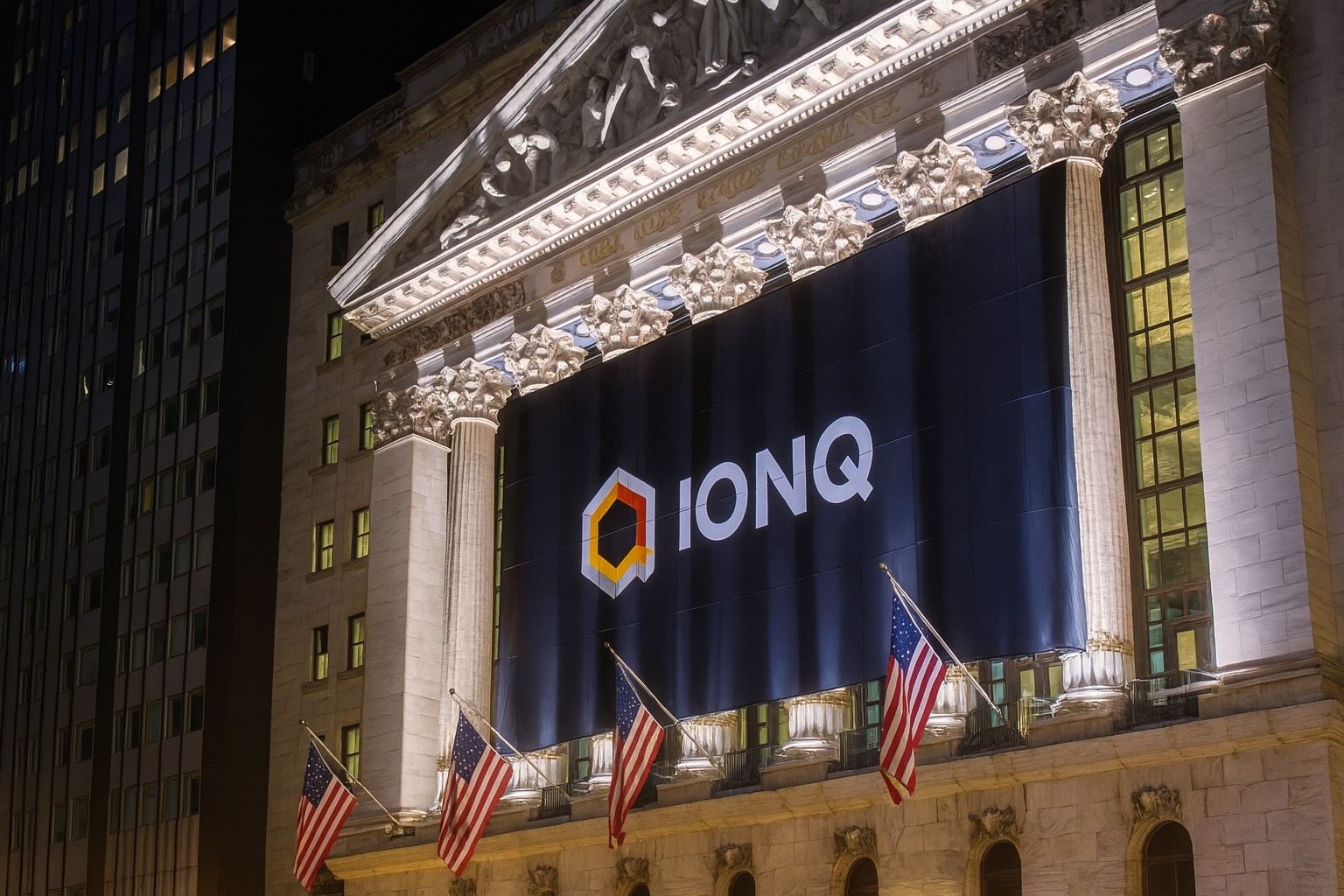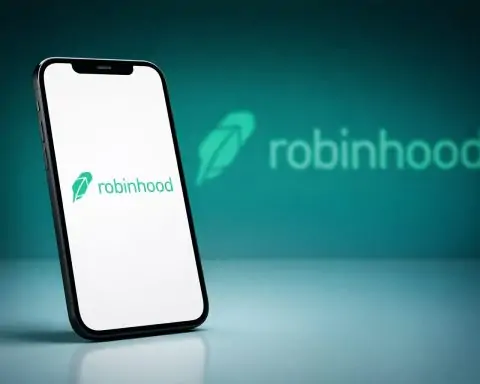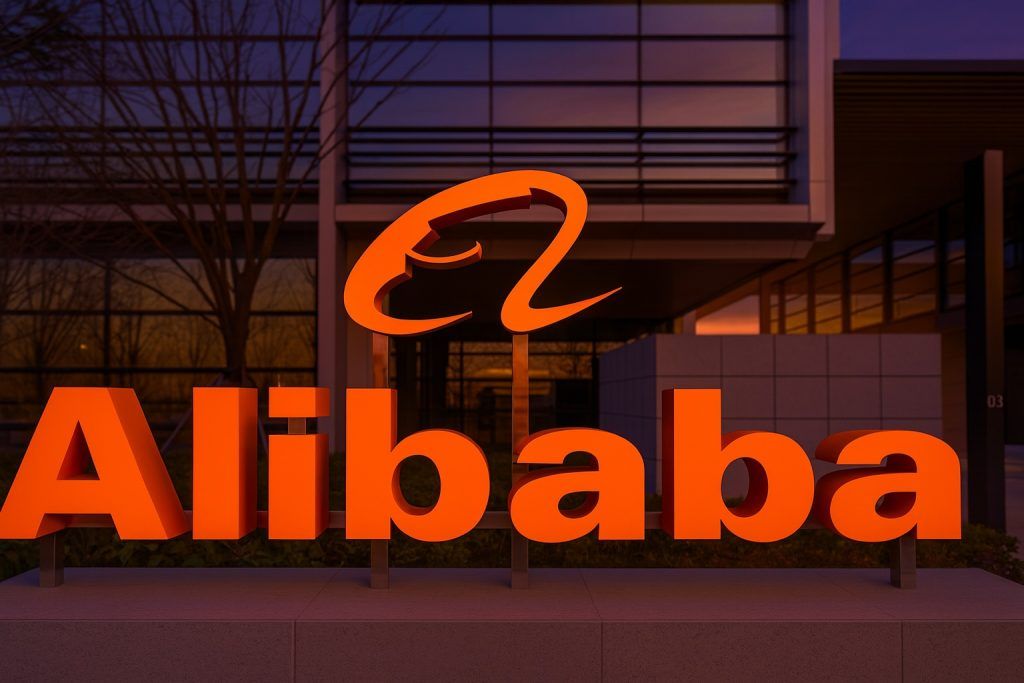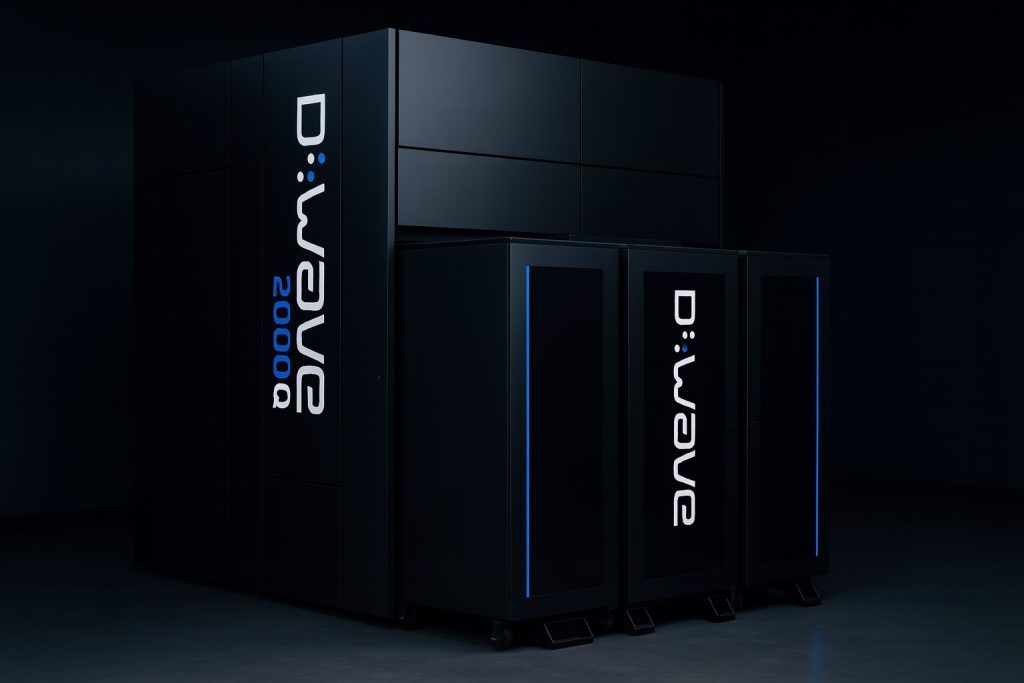- Intraday Volatility: IonQ stock (NYSE: IONQ) traded around $62 on Oct. 20, 2025, swinging from a morning high of ~$65.50 to lows near $59 [1]. Shares are roughly flat versus Friday, but remain up dramatically year-to-date.
- Spectacular Rally & Pullback: IONQ hit an all-time high around $82 last week after a 700% surge over the past year [2]. However, the stock has since pulled back ~23% to the low-$60s [3] following a massive $2 billion share offering and profit-taking.
- Big News Drives Hype: Investors cheered IonQ’s quantum computing breakthrough in simulating chemical reactions [4] and a landmark $2 billion funding deal at a premium price [5]. Today, IonQ announced it co-founded a “Q-Alliance” quantum hub in Italy, extending its global reach [6].
- Analysts & Experts Split: Bulls tout aggressive growth – some raised price targets to $80–$100 [7] – while bears warn of a quantum “bubble,” with one Wall Street firm targeting just $32 (∼60% below current) [8]. Consensus 12-month forecasts hover around the mid-$50s [9], even as IonQ’s valuation soars above $20 billion.
- Quantum Leader with Risks: IonQ has cemented itself as a front-runner in quantum computing, leveraging unique trapped-ion tech and high-profile partnerships. Its ambitious roadmap (millions of qubits by 2030) and war chest of cash position it for long-term success [10], but huge challenges – from tough competition to unproven commercial use – temper the optimism.
Stock Price & Intraday Movement (Oct 20, 2025)
IonQ celebrated its public listing on the NYSE as a pure-play quantum computing company.
IonQ’s stock seesawed on Monday amid continued volatility. After opening near $65, IONQ shares briefly spiked to about $65.50 before reversing and dipping as low as $58.80 intraday [11]. By afternoon, the stock stabilized around $62.5, essentially flat (-0.6%) versus last week’s close [12]. This breather comes on the heels of a breathtaking rally: on October 13, IonQ closed at $82.59, capping a single-day +16.9% jump [13] [14]. That peak marked roughly a +75% gain year-to-date and an astonishing ~700% rise from a year ago [15]. In fact, IONQ’s 52-week range spans from about $9 to the $80s, reflecting extreme volatility and the stock’s speculative nature [16] [17]. Daily swings of 5–10% have become routine.
The recent pullback to the low-$60s leaves IonQ still sharply higher in 2025, but down roughly 23% from last week’s highs [18]. Traders attribute the dip largely to a major equity offering that will dilute shares, prompting some profit-taking [19]. Even so, IonQ’s market capitalization remains around $20 billion, towering above most early-stage tech peers. At ~$62 per share, IonQ commands valuation multiples near 200× forward sales – a sign that investors are pricing in tremendous future growth [20] [21]. Such lofty pricing makes the stock prone to swift corrections on any hint of disappointment. As one market commentator noted, the recent rally has been driven more by “investor optimism, hype, and government support than by fundamentals” [22]. In short, IonQ’s stock continues to be a rollercoaster – soaring on quantum dreams, yet vulnerable to gravity when reality checks in.
Major News & Catalysts This Month
The past couple of weeks have brought a flurry of news that sent IonQ’s stock on a wild ride. Key developments include:
- Oct. 13 – Quantum Breakthrough: IonQ announced a milestone in quantum chemistry simulation, claiming its latest system solved atomic-level force calculations for complex molecules “more accurately than classical methods” [23]. This breakthrough, achieved with a Fortune Global 1000 automotive partner, was hailed by IonQ’s CEO Niccolo de Masi as “a clear path for quantum computing to enhance chemical simulations that are foundational to decarbonization technologies.” [24] The news fueled optimism about real-world applications for IonQ’s technology and sent the stock spiking nearly 17% that day. It showcased IonQ’s progress beyond benchmarks, hinting at practical uses in materials and climate tech.
- Oct. 10 – $2 Billion Cash Infusion: In a surprise move, IonQ raised $2.0 billion in fresh capital from a single institutional investor [25]. The company priced 16.5 million new shares at $93 each – about 20% above the prior day’s closing price – and issued warrants exercisable at $155 [26]. Hedge fund Heights Capital Management agreed to buy the entire offering, demonstrating hefty long-term confidence. This unprecedented deal (one of the largest-ever equity raises by a quantum tech firm) gives IonQ a huge war chest for expansion, albeit at the cost of shareholder dilution. De Masi called it “the largest common-stock single-institutional investment in the history of the quantum industry,” adding that the funds “will facilitate our global growth and accelerate our quantum commercialization worldwide.” [27] The market’s initial reaction was mixed – shares briefly dipped on dilution worries [28], but the premium pricing and entrance of a deep-pocketed backer have made IonQ “very hard to short,” as CNBC’s Jim Cramer observed [29]. “You don’t know what the real valuation of this is – and that makes it very hard to short,” Cramer said, noting that such a large institutional buy-in signals a new level of credibility [30]. He argued that retail investors alone “can’t handle a $2.0 billion offering” – the fact that an institution eagerly did so “marks the beginning” of more big money flowing into the space [31].
- Oct. 20 – New Q-Alliance Partnership: In breaking news today, IonQ revealed it has joined forces with Italy to launch “Q-Alliance,” a new initiative to establish a quantum computing hub in Lombardy. IonQ is a founding member of this public-private alliance aligned with Italy’s national quantum strategy [32]. The project will build out infrastructure to foster R&D and commercialization of quantum tech across industries like pharmaceuticals, finance, and logistics [33] [34]. As part of Q-Alliance, IonQ will contribute its expertise in gate-based quantum computing along with its unique capabilities in quantum networking and sensing [35]. “Through this landmark quantum collaboration, we intend to create quantum applications that can accelerate every segment of Italy’s major industries – from defense to agriculture, automotive to healthcare,” said IonQ’s de Masi of the partnership [36]. He noted that “all areas of the Italian economy will benefit” by leveraging IonQ’s cutting-edge quantum solutions [37]. The announcement underscores IonQ’s global expansion ambitions – and indeed gave the stock a small boost Monday, with IONQ up about 4% in pre-market trading on the news [38].
- Other Recent Highlights: IonQ’s busy October also saw it named to Fortune’s 2025 “Future 50” list (the only quantum company in the Top 10) for its rapid growth and innovation [39]. On Oct. 7, IonQ completed its acquisition of Vector Atomic, a California startup specializing in quantum precision timing and sensors [40]. The all-stock deal brings in ~75 new employees and technology like atomic clocks and gyroscopes with 1000× GPS accuracy [41]. De Masi said the Vector Atomic buy “marks an exciting expansion for IonQ as we advance toward fully integrated quantum systems… adding world-class, field-deployed sensing capabilities.” [42] It follows IonQ’s earlier 2025 acquisitions of Oxford Ionics (UK-based ion-trap chip technology) and photonics firms LightSmyth/Lightsynq and Qomplx/Capella Space, which aim to bolster quantum networking and communications [43] [44]. IonQ also disclosed new partnerships and customers – for example, it signed MOUs with research institutes KISTI (South Korea) and AIST (Japan), and even made a strategic investment in autonomous vehicle startup Einride to explore quantum optimization in logistics [45]. Notably, Amazon.com revealed a $36.7 million stake in IonQ this year [46], signaling Big Tech’s vote of confidence in IonQ’s prospects. From technical breakthroughs to strategic alliances, IonQ has kept up a drumbeat of positive news, feeding investor enthusiasm.
Expert Analysis & Price Outlook
Despite IonQ’s torrent of good news, experts remain sharply divided on the stock’s outlook. Wall Street analysts covering IONQ span the gamut from exuberant bulls to cautious bears:
- Bullish camp: Several analysts have boosted their price targets in light of IonQ’s momentum. For instance, B. Riley Financial recently raised its 12-month target from $75 to $100 per share [47] [48], while Needham upped its target to $80 [49]. Other brokerages with Buy ratings – including Rosenblatt, Benchmark, and Cantor Fitzgerald – have issued targets in the $60–$75 range [50]. The bullish thesis centers on IonQ’s technology leadership and aggressive roadmap. Optimists point out that IonQ’s latest hardware is achieving record performance (e.g. a #AQ 64 algorithmic benchmark, reportedly outpacing IBM’s best) [51]. They also note IonQ’s plan to scale to 2 million qubits by 2030 and early traction with marquee clients (Amazon, Microsoft Azure, Google Cloud, and companies like AstraZeneca already running tasks on IonQ systems) [52] [53]. With over $3 billion raised in 2025 alone [54], IonQ is extremely well-capitalized to pursue its ambitions. Supportive analysts argue the company could be the long-term winner in a market that Boston Consulting Group says could reach $500+ billion by 2040 [55]. In their view, IonQ’s current steep valuation is justified by its head start and the enormous TAM (total addressable market) for quantum computing in the decades ahead.
- Bearish/Cautious camp: On the other side, skeptics warn that IonQ’s stock has run far ahead of fundamentals. Investment research firm Weiss Ratings recently reiterated a “Sell (D-)” grade on IONQ, citing the company’s still-tiny revenues and ongoing losses [56]. Perhaps most notably, Morgan Stanley remains bearish – analyst Joseph Moore in September maintained an Underweight rating with a mere $32 price target [57]. That implies over -60% downside from current levels, reflecting concerns that the “quantum fever” will cool. Moore acknowledged IonQ’s technical lead but essentially calls the stock a bubble, arguing its ~$20 billion market cap is hard to justify when 2024 revenues are projected around just $40–50 million [58]. Indeed, IonQ’s price-to-sales ratio is an eye-popping 300× (vs. single-digits for typical tech stocks) [59] [60]. The broader Wall Street consensus target for IonQ sits in the high-$50s [61], below the current market price – a signal that many analysts see the stock as fully valued or overvalued after 2025’s huge run-up. Cautious voices highlight that quantum computing is still in its infancy: “IonQ and peers are still in early development stages. Their revenues remain low, losses are large, and the technology is not yet ready for widespread real-world use,” one analysis warned bluntly [62]. In other words, tremendous execution risk remains. Any delays in technology progress or commercial adoption could trigger a sharp correction in these richly priced stocks [63].
- Market sentiment: The stark contrast in price targets (ranging from ~$30 to $100) underscores just how uncertain IonQ’s future is at this stage. Even some tech bulls urge caution, noting that every “next big thing” – from early PCs to the dot-com boom – faced painful growing pains and shakeouts before reaching fruition [64]. “History tells us hype often overshoots reality,” the Nasdaq-owned Motley Fool observed, reminding investors that quantum computing’s timeline is likely longer than the market’s attention span [65]. Still, with IonQ’s stock up so dramatically, short sellers have learned to be careful. The large infusion of cash from Heights Capital has, in effect, extended IonQ’s runway to burn cash on R&D for years. This lessens the near-term risk of dilution or insolvency, which is typically what shorts target in unprofitable companies. “Retail [investors] can’t handle a $2 billion offering… the fact they can sell this much to an institution marks the beginning” of serious money backing IonQ, Jim Cramer noted, implying that big investors will now defend the stock [66]. While he has long preached caution on high-flying quantum stocks, Cramer acknowledged IonQ “may now be emerging as the one to watch.” [67]
Looking ahead, most analysts agree on one thing: volatility will likely remain high. “Quantum hardware stocks will continue to react sharply to technological announcements, funding rounds, and early commercialization successes or failures,” according to one market outlook [68]. For the short term, that means IonQ’s share price could spike higher on any positive breakthrough or big contract – but could just as easily tumble on an earnings miss or broader market jitters [69]. (Notably, IonQ will report its Q3 financial results on Nov. 5, which will give an updated view on revenue traction and spending [70].) Over the long term, IonQ’s valuation will hinge on whether it can fulfill lofty goals – achieving useful error-corrected quantum computers at scale – before competitors catch up or investor patience wears thin. The company itself remains confident: “IonQ has world-class talent, cash, and a strengthened unique position to expand our ecosystem,” CEO de Masi said recently [71]. Bulls and bears will be watching closely to see if IonQ can turn that potential into reality.
Strategic Developments & IonQ’s Market Position
IonQ’s recent rise is not just about stock mania – the company has been executing an aggressive growth strategy in 2025 to secure its leadership in quantum computing. This includes acquisitions, partnerships, and technology milestones designed to widen its moat:
- Buying key tech & talent: IonQ has scooped up several startups this year to accelerate its roadmap. Its blockbuster $1.08 billion acquisition of Oxford Ionics (announced in June) aims to marry Oxford’s cutting-edge “ion-trap-on-a-chip” technology with IonQ’s systems [72]. The goal? To drastically scale quantum processors – targeting 800 logical qubits by 2027 and a whopping 80,000 by 2030 [73]. For context, today’s leading quantum machines have qubit counts in the low hundreds (and far fewer logical, error-corrected qubits). IonQ is essentially betting that by integrating Oxford’s miniaturized ion traps, it can pave the way for mass-producible quantum chips with vastly higher qubit counts. In addition, IonQ’s acquisition of Vector Atomic adds expertise in quantum sensing (e.g. navigation systems and clocks), which complements its computing platforms [74]. Other buys like Lightsynq and Qubitekk/Capella bring photonics and networking capabilities – crucial for building a future “quantum internet” where quantum computers communicate via light over long distances [75] [76]. These moves indicate IonQ’s aspiration to offer a full-stack quantum solution (computing + networking + sensing). By assembling pieces across hardware and applications, IonQ is positioning itself not just as a maker of quantum computers, but as a quantum ecosystem leader.
- Strategic partnerships: Along with M&A, IonQ is forging alliances worldwide. The new Q-Alliance in Italy is one example of tapping government-backed programs to advance quantum research [77]. IonQ has also partnered with institutions in South Korea and Japan on quantum initiatives [78], and joined forces with the U.S. Department of Energy on a memorandum for quantum satellite communication tests [79]. These collaborations expand IonQ’s global footprint and could seed future commercial opportunities. On the corporate side, IonQ’s inclusion in major cloud platforms (Amazon AWS’s Braket, Microsoft Azure Quantum, Google Cloud) makes its quantum processors easily accessible to developers [80]. That has helped attract early customers in sectors like pharmaceuticals, finance, automotive, and aerospace. For instance, aerospace giant Airbus and drugmaker AstraZeneca have run experiments on IonQ machines. And in a sign of industry validation, Amazon not only hosts IonQ’s service but also took an equity stake in the company [81]. IonQ’s leadership frequently emphasizes building an “ecosystem” of partners, from software startups porting algorithms to end-users exploring quantum solutions. All these ties could pay off as quantum computing matures – or provide fallback markets (like quantum sensing for defense) if pure computing takes longer to commercialize.
- Technology approach: IonQ’s edge largely comes from its unique hardware approach. Unlike most rivals that use superconducting circuits (IBM, Google, and startup Rigetti) or photonic qubits (PsiQuantum) – or D-Wave’s niche quantum annealing method – IonQ relies on trapped ytterbium ions as qubits. These atoms, suspended in electromagnetic traps and manipulated with lasers, offer very high fidelity (low error rates) and all-to-all qubit connectivity, which simplifies certain algorithms. This has allowed IonQ to achieve some of the best quantum performance metrics to date. For example, IonQ reported a record algorithmic qubit (#AQ) score of 64 this year, slightly above IBM’s top 127-qubit system on comparable benchmarks [82]. Trapped-ion systems are relatively slow (milliseconds per operation vs microseconds for superconducting chips), but IonQ has mitigated this by hybridizing with classical computers – e.g. using NVIDIA GPUs and Azure cloud alongside its quantum hardware to speed up workloads like drug discovery by 20× [83]. Still, scaling up trapped-ion devices remains challenging (they currently require complex laser setups and vacuum systems). That’s why the Oxford Ionics “on-a-chip” integration is crucial: if IonQ can put ion traps on semiconductor chips, it could dramatically miniaturize and network its qubits, combining the accuracy of ions with the scalability of silicon. This would be a breakthrough toward building the large, error-corrected quantum computers needed for broad commercial use. It’s a race against time and competition – but IonQ’s multi-pronged strategy (organic R&D plus acquisitions) shows it’s pushing aggressively on the technology front.
- Market position vs peers: Among the handful of publicly traded quantum pure-plays, IonQ stands out as the clear leader by market value and revenue. Its ~$20 billion market cap is roughly double that of rivals Rigetti Computing (NYSE: RGTI) or D-Wave Quantum (NYSE: QBTS) [84]. IonQ’s revenue, while small, was about $20.7 million in Q2 2025 – far ahead of Rigetti’s ~$1.8 million or D-Wave’s ~$3 million that quarter [85]. This gap reflects the higher maturity of IonQ’s systems and its head start in securing business deals (often through cloud access and research contracts). By comparison, Rigetti has struggled with technical setbacks in scaling its superconducting qubit chips, and D-Wave’s annealing technology addresses a narrower set of optimization problems. That said, all these companies are pre-profit and deep in R&D mode, so none have proven a viable commercial model yet. IonQ’s hefty cash cushion (over $1.6 billion even before the latest $2 billion raise) [86] [87] gives it a significant advantage – it can sustain high spending on development and even absorb smaller competitors if needed. But IonQ also faces an existential challenge: technology giants like IBM, Google (Alphabet), Microsoft, and Amazon are investing heavily in quantum computing, often with different approaches (superconducting qubits, photonic qubits, topological qubits, etc.) [88]. If one of those behemoths makes a leap or if they decide to vertically integrate (for instance, Amazon building its own ion-trap machines), IonQ could see its first-mover advantage erode. For now, IonQ is unique as a pure-play that public investors can bet on in the quantum boom. Its stock has become a proxy for quantum computing optimism – which is a double-edged sword, amplifying both the ups and downs.
Quantum Computing Boom: Hype vs. Reality
IonQ’s rise coincides with a broader frenzy for quantum computing stocks in 2024–2025. The entire sector has been on fire this year: shares of IonQ and peers like Rigetti, D-Wave, and Quantum Computing Inc. (NASDAQ: QUBT) have surged anywhere from 700% to 6,000% from their lows [89]. Analysts have likened it to past tech manias, where speculative excitement runs high despite minimal revenues. Fortune magazine recently dubbed it a “quantum gold rush,” and there is increasing chatter about whether a bubble is forming in quantum tech [90] [91]. Bulls counter that unlike faddish trends, quantum computing has genuine world-changing potential – citing forecasts of $0.5–1 trillion in economic value by 2035–2040 as the technology matures [92]. Already, governments and corporations worldwide are investing in quantum research, knowing it could revolutionize fields from cryptography and drug discovery to climate modeling and AI. This macro trend undoubtedly benefits IonQ: as one of the few “pure plays” available, it has attracted outsized investor interest as a way to ride the quantum wave.
However, the timeline for quantum impact remains uncertain. Most experts believe that truly scalable, fault-tolerant quantum computers (capable of solving broad real-world problems faster than classical supercomputers) are still 5–10+ years away. Today’s devices, including IonQ’s, are mostly useful for research, proof-of-concept demos, and very specialized tasks – they are not yet transforming industry workflows at scale. There is also a talent bottleneck, and algorithms need to be developed to fully exploit quantum hardware. In the near term, much of the excitement is driven by milestone events (like IonQ’s chemistry simulation result or IBM’s recent 127-qubit processor) rather than by revenue or profits. This dynamic can lead to boom-bust cycles: stocks rocket on promising news, then retreat when cold reality (e.g. widening losses, more stock dilution) sets in [93] [94]. We saw a glimpse of that with IonQ itself – a euphoric surge to the $80s, followed by a rapid 25% drop once the $2 billion share issuance reminded investors of the dilution and long road ahead [95].
For now, IonQ stands at the center of the quantum revolution’s narrative: it’s arguably the best-capitalized, most technically advanced pure-play in an industry that could reshape computing. The company is executing on an expansive vision, from building bigger quantum processors to networking them via satellites. If it delivers on even a fraction of its goals, IonQ could be a cornerstone of the next computing era – and its current $20 billion valuation will look justified (or even cheap) in hindsight. But if quantum progress stalls or competitors leapfrog ahead, IonQ’s stock could have a long fall back to Earth. As of late 2025, investors in IonQ are effectively betting on a moonshot: that this young company can turn science fiction into commercial fact, and do so before others catch up or the cash runs out.
Bottom Line: IonQ’s stock has given investors a thrilling ride, embodying both the promise and perils of quantum computing. The recent breakthroughs and a massive $2 billion cash injection underscore IonQ’s momentum and the high hopes riding on it [96]. But with a valuation light-years beyond current fundamentals, the company is priced for perfection – any slip could be harshly punished [97] [98]. For believers, IonQ offers a front-row seat to what could be the next tech revolution. For skeptics, it’s a classic case of hype outpacing reality. As quantum computing inches forward, IonQ will continue to be a stock to watch, navigating between quantum leaps and quantum risks.
Sources: IonQ press releases and investor site; TechStock² (TS2.tech) analysis [99] [100] [101] [102]; Yahoo Finance/MarketBeat [103] [104]; Benzinga [105]; CNBC [106]; Reuters & Fortune reports on quantum industry [107] [108].
References
1. stockanalysis.com, 2. ts2.tech, 3. stockanalysis.com, 4. ts2.tech, 5. ts2.tech, 6. www.benzinga.com, 7. ts2.tech, 8. ts2.tech, 9. ts2.tech, 10. ts2.tech, 11. stockanalysis.com, 12. stockanalysis.com, 13. ts2.tech, 14. ts2.tech, 15. ts2.tech, 16. ts2.tech, 17. ts2.tech, 18. stockanalysis.com, 19. stockanalysis.com, 20. ts2.tech, 21. ts2.tech, 22. ts2.tech, 23. ts2.tech, 24. ts2.tech, 25. ts2.tech, 26. ts2.tech, 27. ts2.tech, 28. stockanalysis.com, 29. cryptorank.io, 30. cryptorank.io, 31. cryptorank.io, 32. www.benzinga.com, 33. www.benzinga.com, 34. www.benzinga.com, 35. www.benzinga.com, 36. www.benzinga.com, 37. www.benzinga.com, 38. www.benzinga.com, 39. ts2.tech, 40. ts2.tech, 41. ts2.tech, 42. ts2.tech, 43. ts2.tech, 44. ts2.tech, 45. ts2.tech, 46. ts2.tech, 47. ts2.tech, 48. ts2.tech, 49. ts2.tech, 50. ts2.tech, 51. ts2.tech, 52. investors.ionq.com, 53. investors.ionq.com, 54. ts2.tech, 55. ts2.tech, 56. ts2.tech, 57. ts2.tech, 58. www.reuters.com, 59. ts2.tech, 60. ts2.tech, 61. ts2.tech, 62. ts2.tech, 63. ts2.tech, 64. ts2.tech, 65. ts2.tech, 66. cryptorank.io, 67. cryptorank.io, 68. ts2.tech, 69. ts2.tech, 70. stockanalysis.com, 71. ts2.tech, 72. ts2.tech, 73. ts2.tech, 74. ts2.tech, 75. ts2.tech, 76. ts2.tech, 77. www.benzinga.com, 78. ts2.tech, 79. ts2.tech, 80. investors.ionq.com, 81. ts2.tech, 82. ts2.tech, 83. ts2.tech, 84. ts2.tech, 85. ts2.tech, 86. ts2.tech, 87. ts2.tech, 88. ts2.tech, 89. ts2.tech, 90. ts2.tech, 91. ts2.tech, 92. ts2.tech, 93. ts2.tech, 94. ts2.tech, 95. stockanalysis.com, 96. ts2.tech, 97. ts2.tech, 98. ts2.tech, 99. ts2.tech, 100. ts2.tech, 101. ts2.tech, 102. ts2.tech, 103. stockanalysis.com, 104. ts2.tech, 105. www.benzinga.com, 106. cryptorank.io, 107. ts2.tech, 108. ts2.tech







